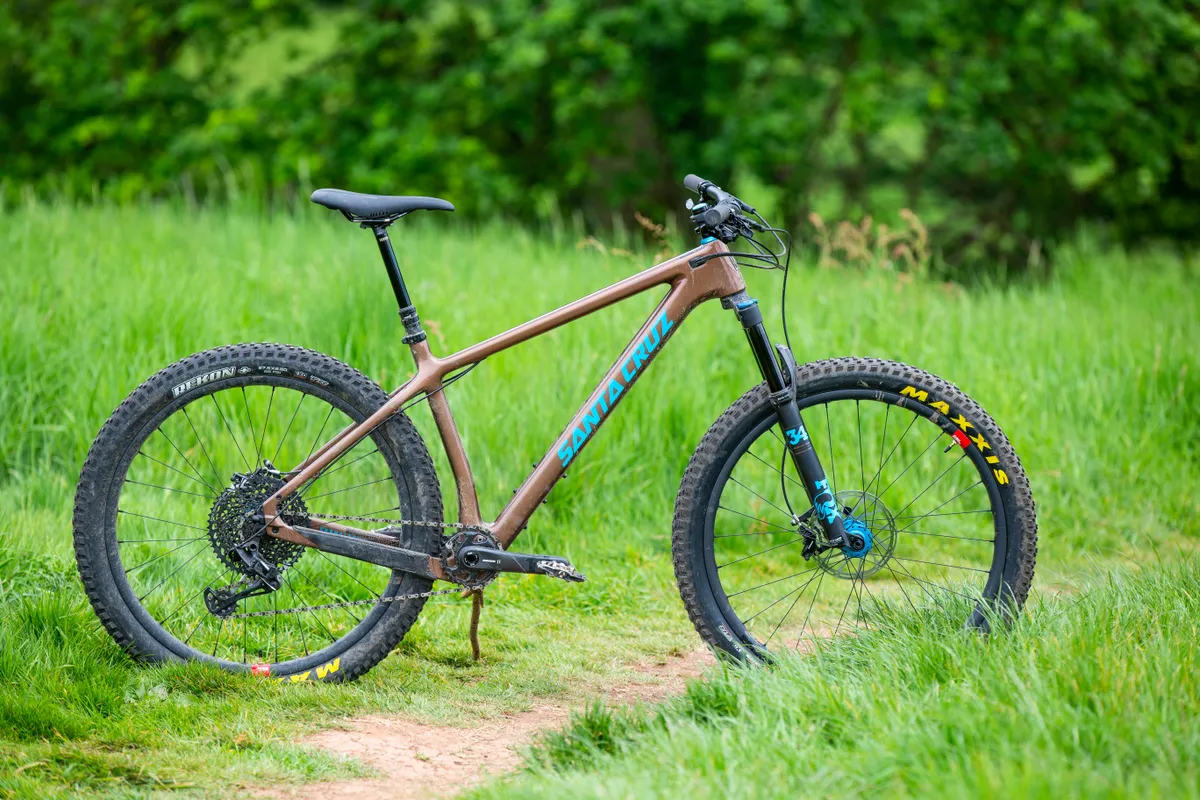
The Chameleon — a venerable name in Santa Cruz’s lineup — is the company's do-it-all hardtail, designed for everything from all-day epics to slipping and sliding around in the woods.
This generation has both alloy and carbon versions, with 29in and 27.5+ options too. It’s the carbon SE+ version that I have here, which gets Santa Cruz’s carbon Reserve rims laced onto Hope Pro4 hubs with a pair of 27.5 x 2.8in Maxxis tyres.
- Juliana Maverick is introduced and Santa Cruz Hightower gets a revamp
- Santa Cruz update 5010 and Bronson
Santa Cruz Chameleon C SE+ long-term review update two
Intentions rarely match reality, and, for a number of reasons, my Chameleon has stayed stationary for much of the time between these long-term review updates.
First, I've had a lot of test bikes to rattle through, so spare time to ride my long-termer has been limited. And second, I had an issue with the Marzocchi Z2 fork.
I'm not 100 per cent sure what the issue was, but Fox UK very quickly rectified the problem, once I'd managed to get it boxed up and shipped that is.
Changes during this time have been subtle – though maybe not in terms of colour. The biggest has been the brakes, which I've swapped from the stock SRAM Guide Rs to what might be considered an overkill set of Code RSCs in SRAM's signature red.
Why? Well, the basic Guide that was fitted didn't offer the most powerful braking and on rough, rocky tracks more powerful braking means less effort used squeezing levers, with more effort channelled in to simply hanging on.
And hang on I've had to.
I recently took the Chameleon to the Lake District for my annual trip with friends. No, a singlespeed hardtail perhaps isn't the bike you'd expect to be chosen to ride in some of England's biggest mountains hills, but with one day on my MBUK long-term Specialized Stumpjumper EVO, the Chameleon made a nice change in terms of ride feel. Not only that, but it's a damn sight nicer to hike-a-bike than the EVO.
Needless to say, rattling down some of the rockier tracks we could find required plenty of hanging on.
Furthermore, the Chameleon certainly wasn't the fastest option down the hill. However, I really enjoyed having to use a totally different set of riding skills to coax the bike up and over the rocks, and slither around very damp, grassy corners. Full suspension definitely has its place, but so too does something utterly compromised in most situations.
Other changes to the bike have come in the form of the rubber. In the Lakes I ran a 2.6in Bontrager SE4 upfront and a prototype SE5 2.8in tyre at the back, which I had knocking about. Since then, I've swapped to a pair of Schwalbe Eddy Currents: 29 x 2.6 for the front and 27.5 x 2.8 at the back.
If you know your rubber, you might be scratching your head, but hear me out…
The Eddy Current is Schwalbe's eMTB 'specific' tyre with a chunky tread and chunky carcass. My Chameleon is about as far away from an eMTB as you can get, but the back end of the bike is stiff, and on rocky and rooty tracks the rear wheel gets a pounding.
My theory is that the stiff carcass will protect the rims better, so I'm less worried about sketchy lines causing cuts and/or punctures. Also, the tread on the tyres is super chunky.
The SE5 I had at the back did let go of its grip from time to time, and have you ever heard anyone complain about having too much grip up front?
So, time will tell. It could be a terrible idea, and the tyres are potentially rather draggy, which may make the bike feel sluggish. Stiffer carcasses can also lead to that wooden feel that tyre reviews occasionally talk about.
However, the point of a long-term bike is to try stuff out. So, here I go. I'll let you know how I get on next time.
[acast acastid="techtalk-doesweightreallymatter-" accountid="bikeradarpodcast" /]
Santa Cruz Chameleon C SE+ long-term review update one
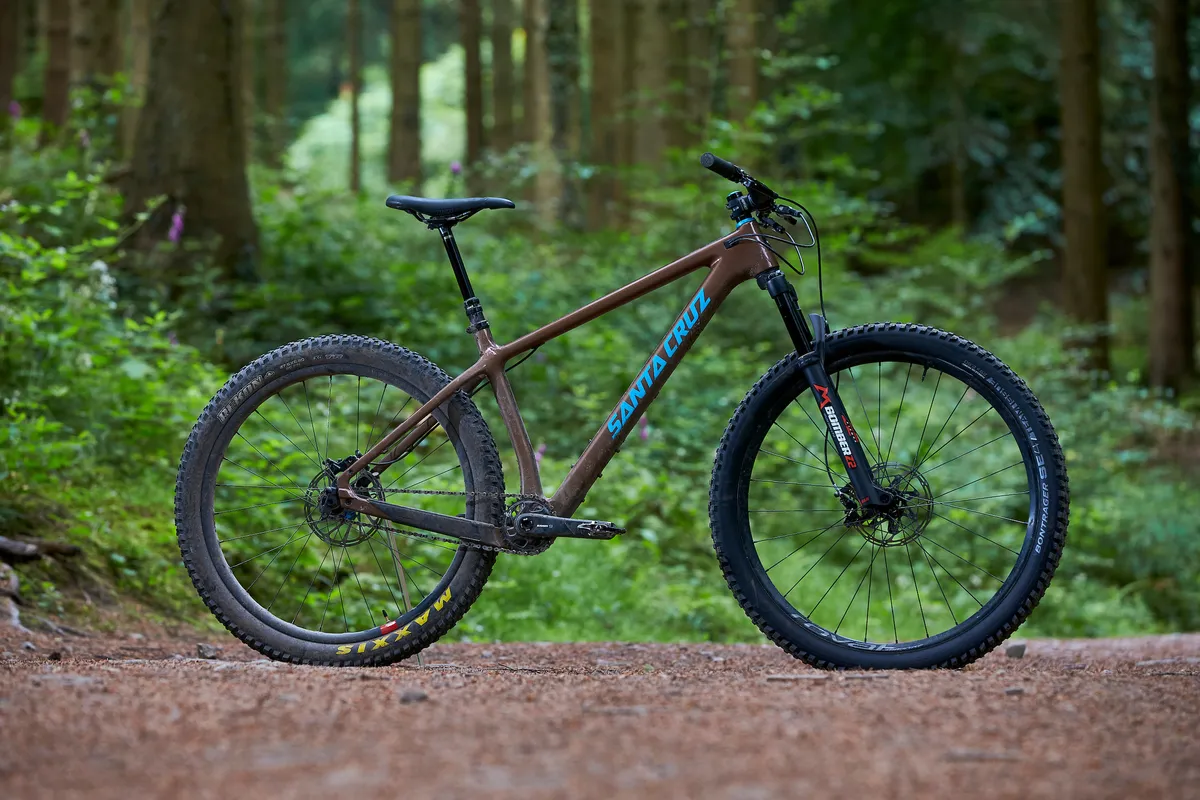
I rode the Chameleon in its stock build for a little while, and it's pretty rude to get a fresh bike and then change it immediately. However, I felt the Californian influences weren't going to cut the mustard in the UK for long – namely those Rekon+ tyres.
They're skinnily treaded, and while fast-rolling at the back, aren't the grippiest up front.
As mentioned at the end of my original long-term review post further down, I stuck a 29in wheel in the Fox 34 fork. Since doing this, it has remained 'mulleted', because for the riding I like doing, the more accurate, grippier front wheel makes the most sense.
Currently it has a Bontrager SE4 2.6in tyre fitted to an alloy Roval wheel, which I stole from a Specialized Stumpjumper EVO test bike.
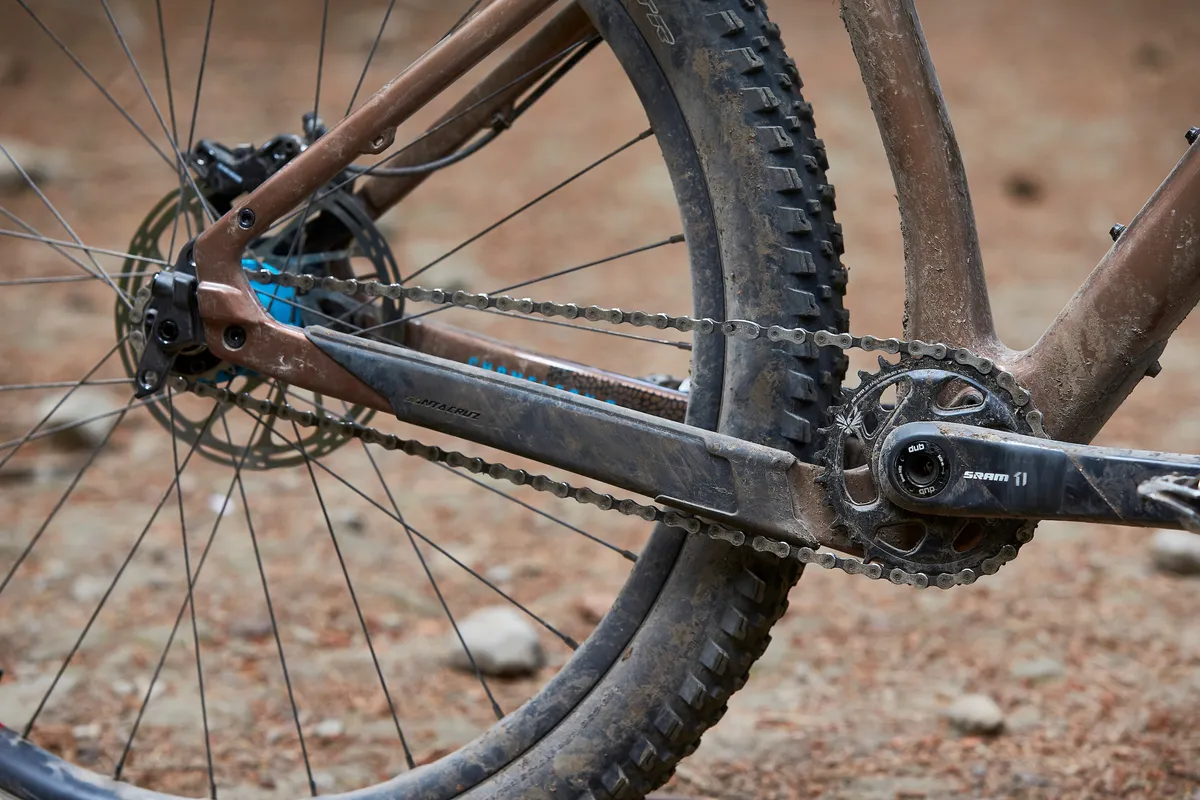
The other idea I'd had was to ditch the gears full-stop.
I rode singlespeed bikes for four years at uni and, for some reason, absolutely loved it. With the swinging dropouts on the Chameleon, the job was a simple one to swap over to a single sprocket at the rear.
What was harder was finding a singlespeed converter for an XD-driven rear hub. Back in the day, all freehubs were splined with a regular Shimano design, so there were loads of singlespeed cogs out there. The XD system mounts the cassette differently, but with a bit of digging, I came across this system from Gusset.
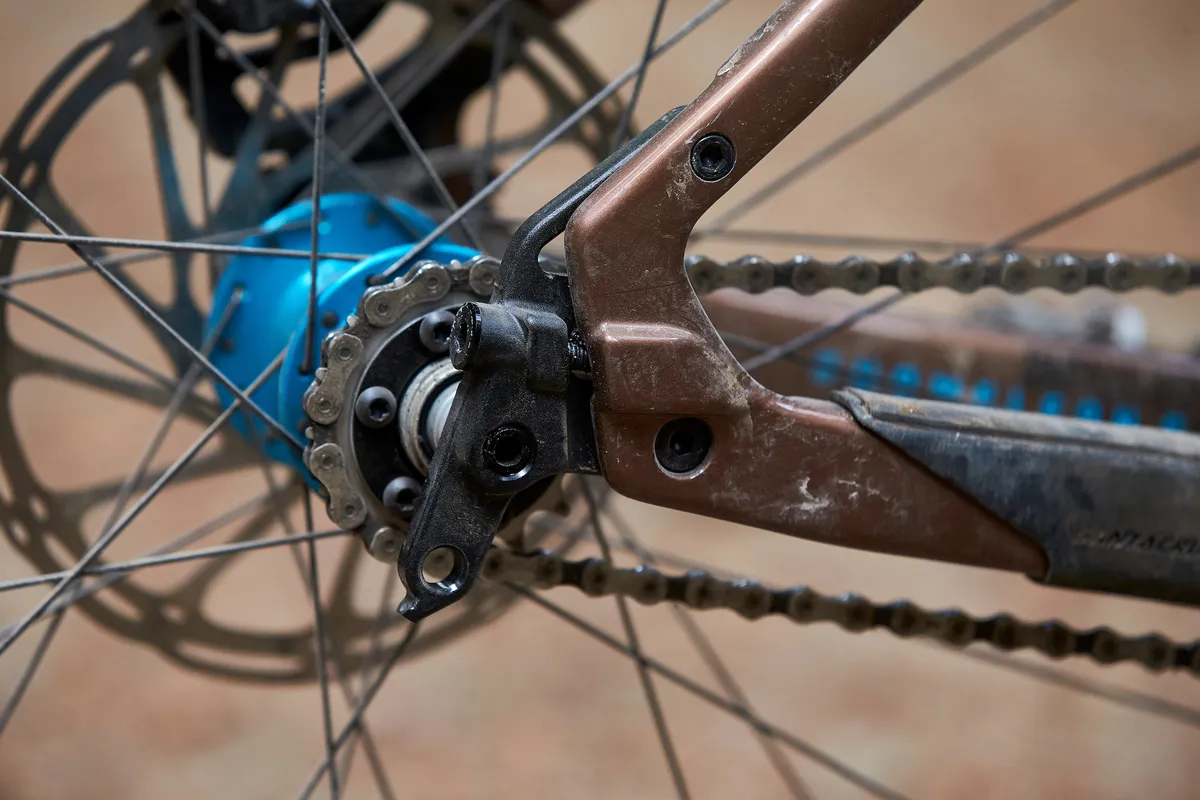
The Chameleon comes with a 30t ring, so I started with a 16t sprocket. On a 26in wheeled bike the 'classic' singlespeed ratio was 32:16, so I figured with the slightly larger diameter 27.5+ rear wheel in place I'd gear-down to get an equivalent ratio.
With only a couple of rides under my belt, I soon realised that either hills have got steeper since uni or (more likely) my more elderly legs have lost some of their strength that helped push a chunky gear. So, I'll admit, I've dropped it down again and 30:17 is clearly the gear of champions!
Time will tell if more rides on the singlespeed will bring back my previously hulk-like legs – here's hoping...
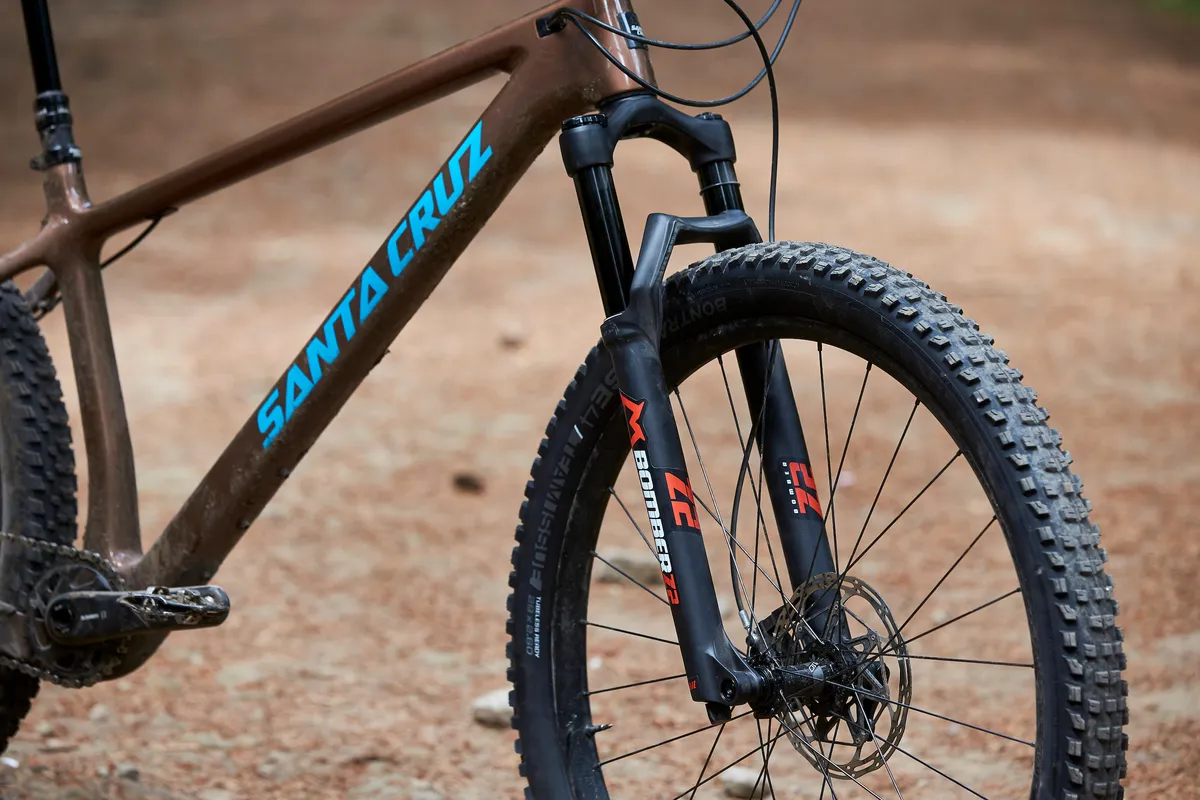
Finally, I've added the Marzocchi Z2 forks ready for reviewing. They are, basically, a simplified Fox Rhythm 34, which is what they replaced, but with a touch more weight, from what I can tell anyway.
My singlespeeded Chameleon ride impressions
So, what's it like to ride? It is an absolute hoot. I'm not going to get all holier-than-thou – it's just a bike with one gear – but it does completely change how a bike is ridden.
Longer fireroad drags are still a drag, but the gear is low enough to be able to sit and spin fairly socially, and when it gets a bit steeper, I find myself standing on the pedals churning a slightly lower cadence than my mates.
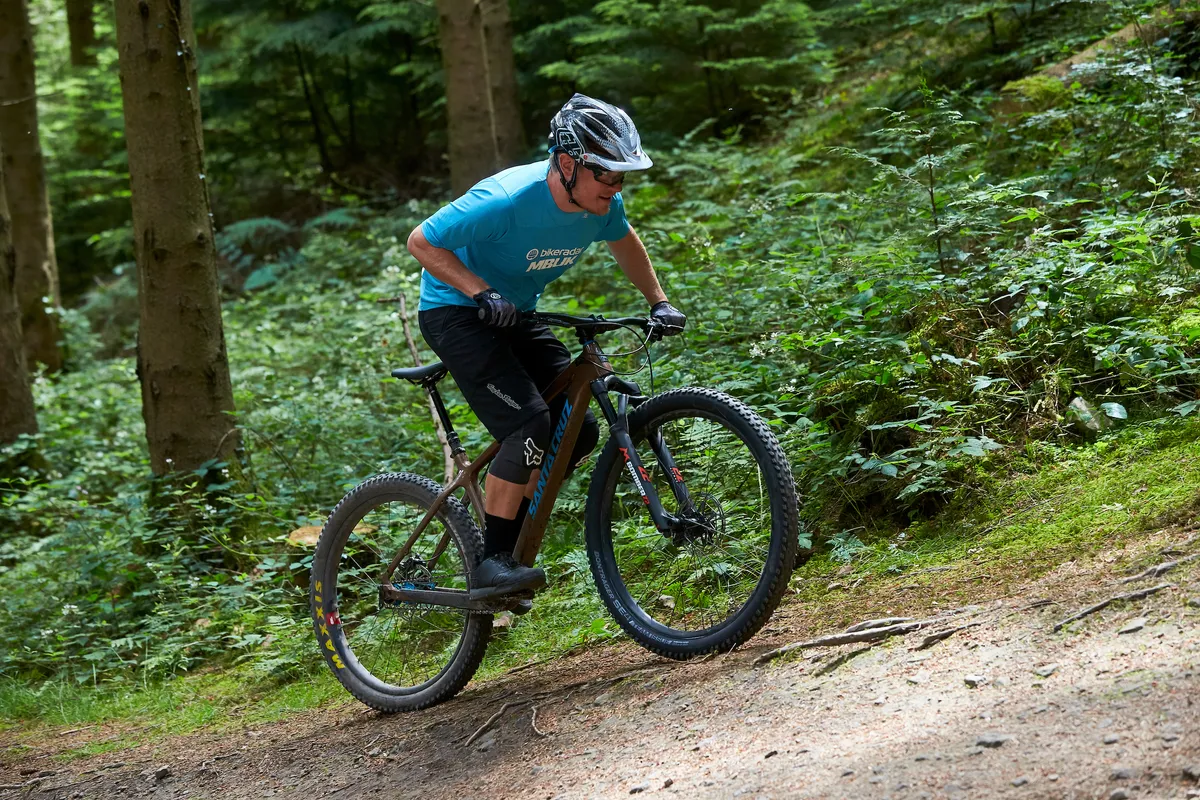
The biggest difference is on rolling climbs, like those you find at a trail centre.
Here the rhythm of the climb changes. Instead of clicking down a few gears and spinning up shorter steep sections, these have to be attacked.
When the climb flattens a little, this is where I rest, rather than clicking up and building or maintaining my speed. Riding with buddies last weekend highlighted this difference.
While we got to the top of the hill at roughly the same overall speed (though we were all blowing hard by the top), I found it difficult to ride behind them on the singletrack, and as they slowed, I needed to accelerate.
So long as I was at the front, all was good, and I'm happy to admit that I was pretty broken by the end of the ride.
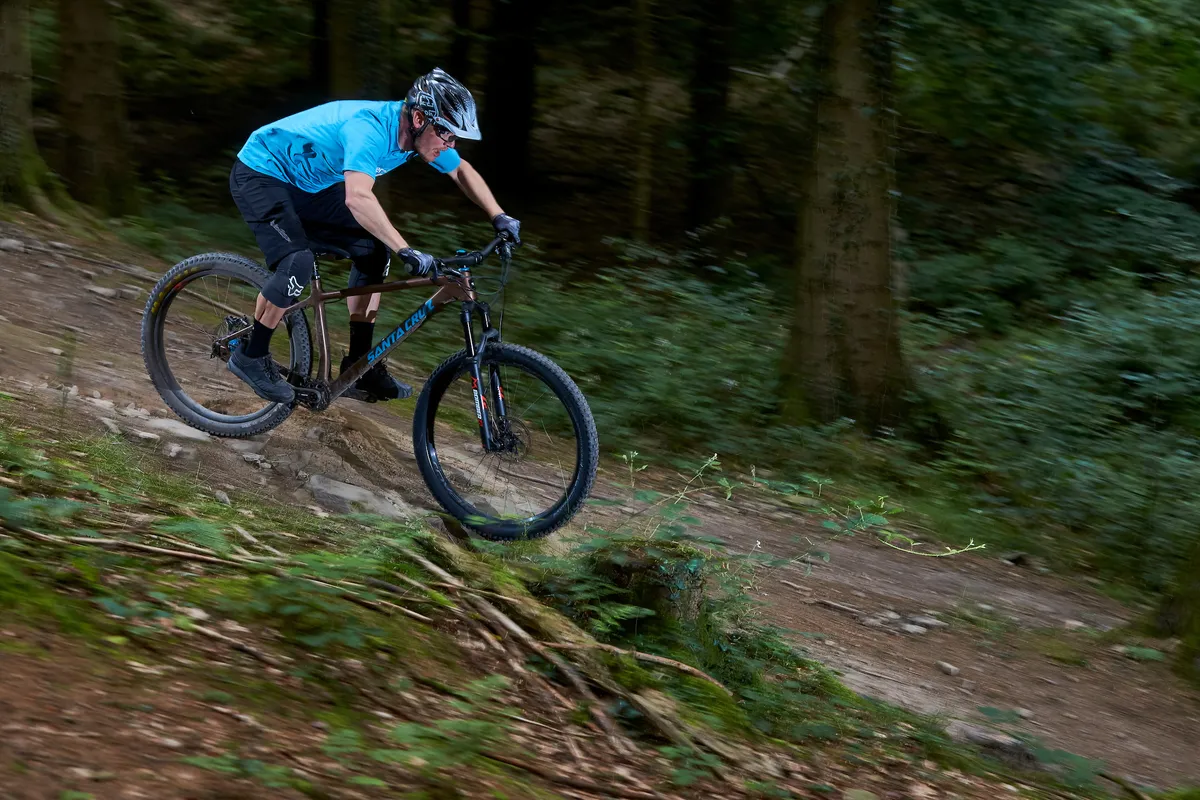
Descending is also slightly different. At higher speeds I can't just start pedalling because I'd need a crazy cadence to add much to my speed. So there's more pumping, more looking ahead, and more hoping that I'll be able to get around the next corner without braking and killing my momentum.
It complements the hardtail in that regard, because these are some of the things that you need to do if you're trying to keep up with fully-suspended friends.
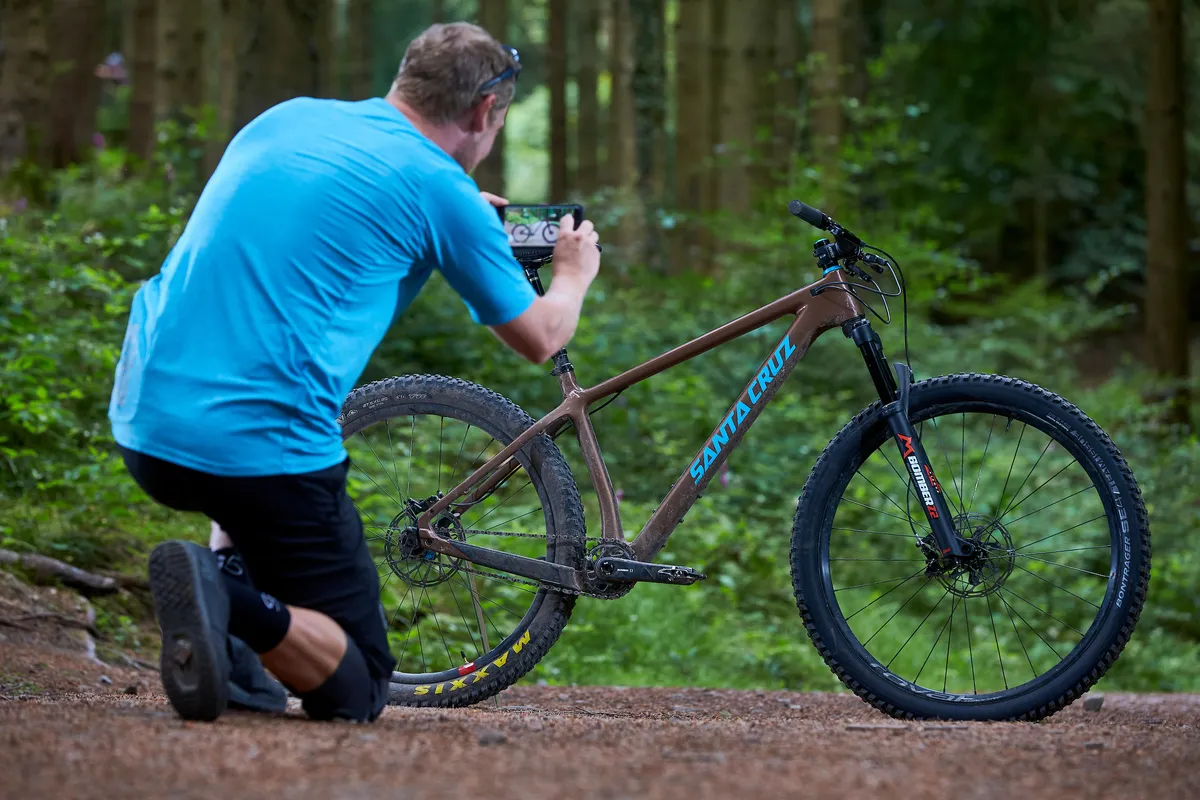
There's no doubt that I've totally compromised myself here; riding with my friends and colleagues on full-sus bikes puts them at a massive advantage, but I reckon on the right track, on the right day, it's not as bad as you might think. And, based on last weekend's exploits, I had a chunk more fun than they did!
I still have plans for the bike though. Tyres may well get swapped out, because, like at the front, the Rekon lacks grip when braking.
I'm also not a big fan of the SRAM Guide R brakes, they feel under-powered. They could do with a good bleed, but I'd also like something a bit meatier.
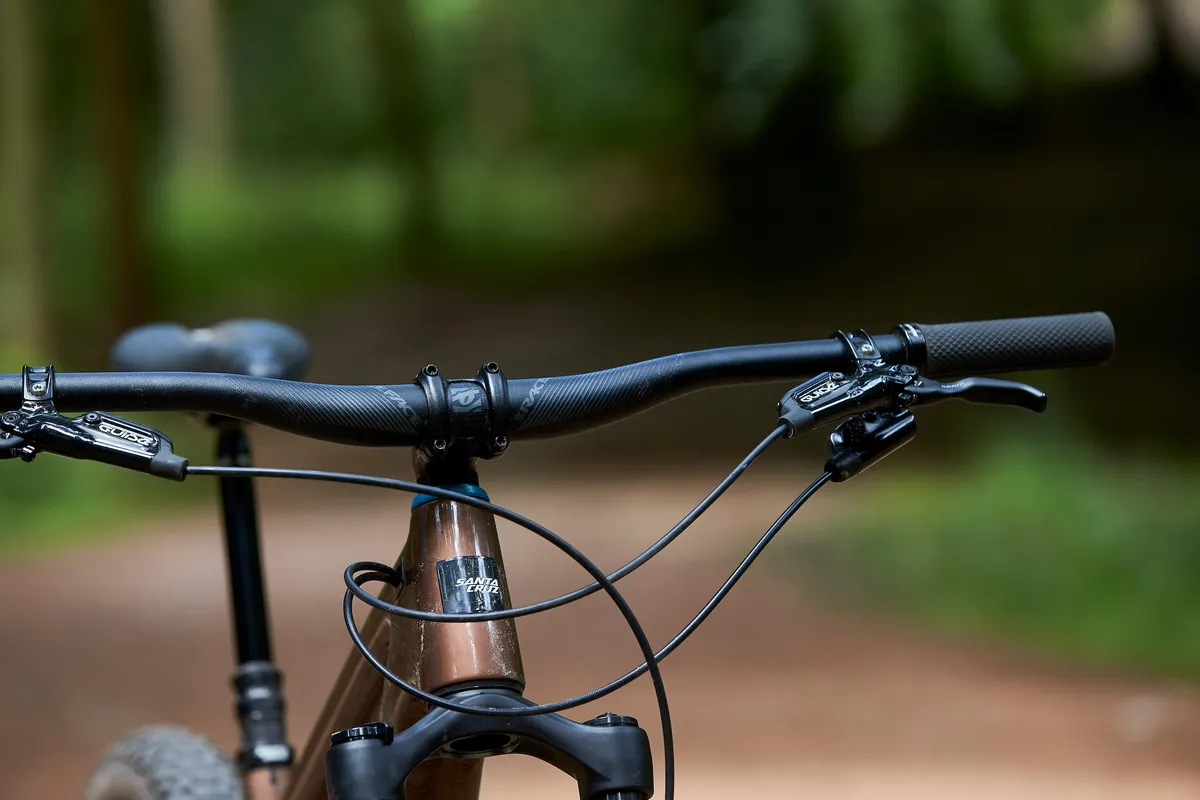
Original post (9 July 2019)
Santa Cruz has given the Chameleon a relatively reserved shape, with a reach (size Large, plus wheels) of 456mm, a 67.2-degree head angle, 72.7-degree seat angle and chainstays measuring 415–430mm long.
On the face of it, I’m fairly happy with all those; for a fun, playful bike I’m not fussed about super slack, stretched out geometry, however, the seat angle does appear slack on paper.
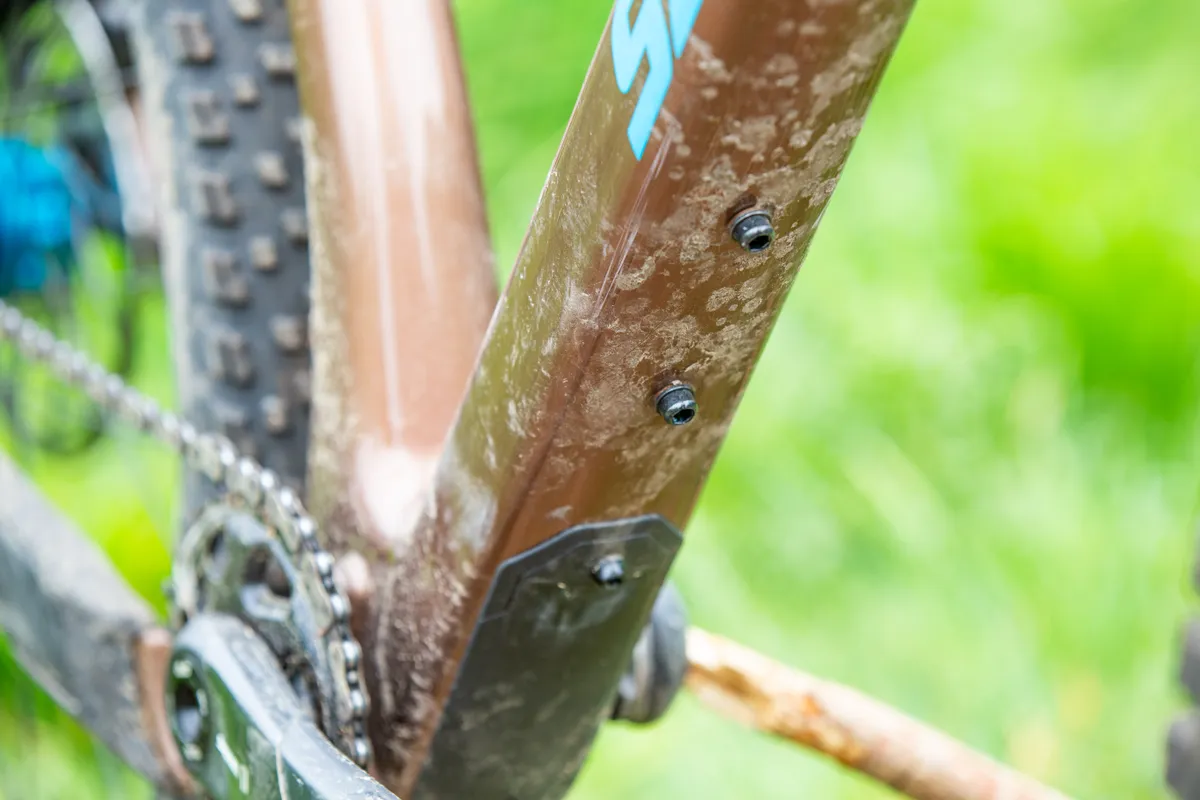
While I’m unlikely to exploit the adventurous side of the Chameleon to its full advantage, under the down tube there are mounts for a cargo carrier to be bolted on.
The other, not often seen, option is to run the bike single speed — having ridden one-geared bikes a lot at university, I’m planning on heading back this way later in the year.
Please note — Santa Cruz has adjusted the price from £5,699 down to £5,399 since I shot this video.
Santa Cruz Chameleon C SE+ specification and details
While most Santa Cruz bikes come with two carbon options, there’s only the ‘cheaper’ C version for the Chameleon.
The frame has internal cable routing, as you’d expect, and has a pair of alloy dropouts at the back, which are adjustable, depending on the wheelsize used.
Alongside the cargo carrier mounts under the down tube, there’s also a set of bosses on top of the down tube for a bottle cage. There are none on the seat tube, however.
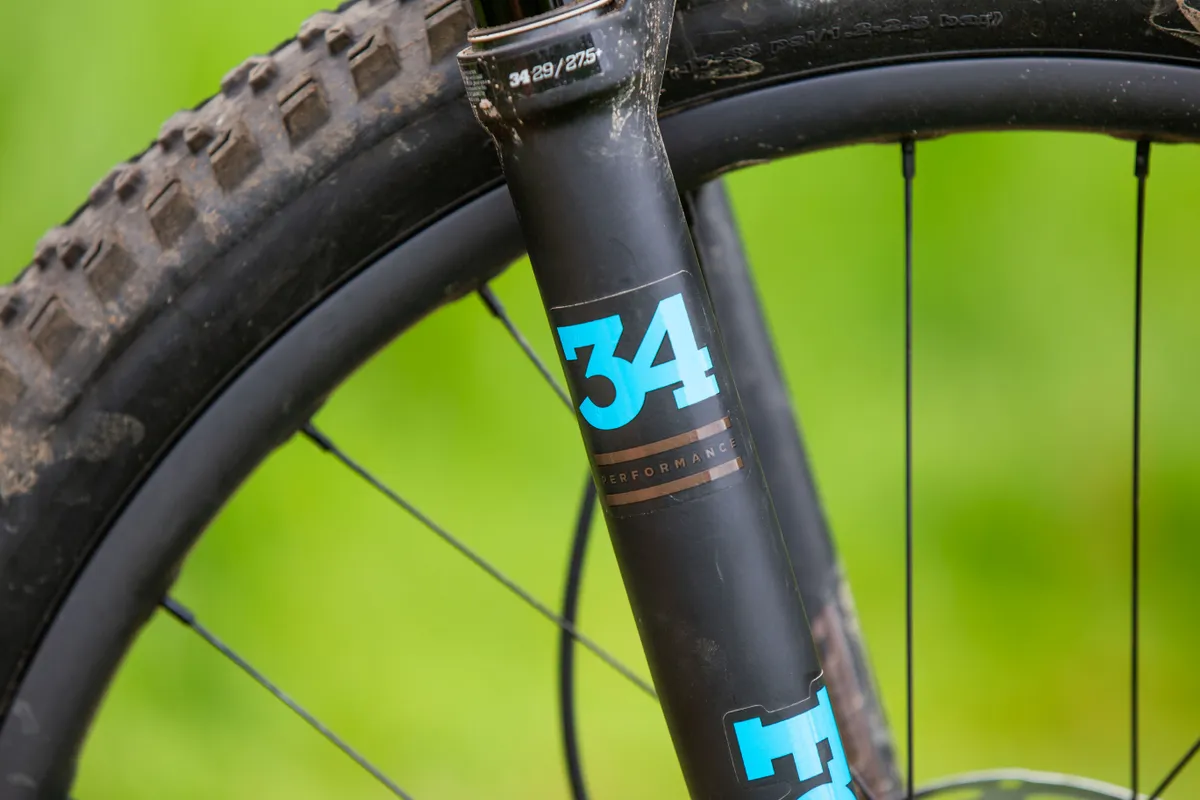
Despite a sky-high price, the C SE+ version comes with some relatively basic kit.
Up front there’s a 130mm Fox 34 Performance fork, with the basic GRIP damper — the 29er option gets a 120mm fork. The drivetrain is based around SRAM’s GX Eagle, though you get a carbon SRAM Stylo chainset with a 30t ring on it.
SRAM also provides the brakes, a set of Guide Rs paired with 180mm rotors.
Santa Cruz has built a pair of Hope Pro4 hubs into its Reserve 37 rims in a decal-matching turquoise colour. These are 37mm wide internally and hold a 2.8in Maxxis Rekon+ tyre with an EXO sidewall that's tubeless from the off.
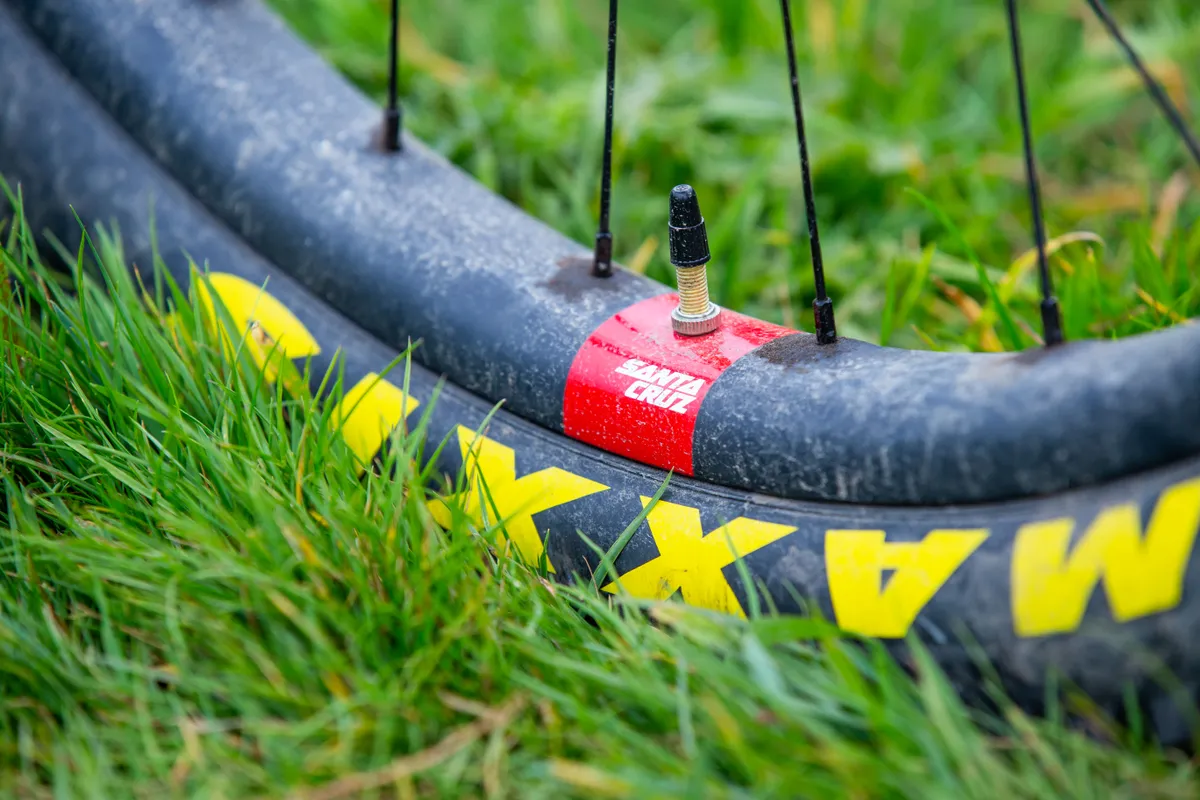
RaceFace’s dependable Aeffect R bars and 50mm stem are finished off with Santa Cruz Palmdale grips in the cockpit, while the rest of the build consists of a 150mm RockShox Reverb and WTB Silverado Pro saddle, and colour-matched Hope headset.
All in, this hardtail weighs 11.8kg.
Santa Cruz Chameleon C SE+ full specification
- Sizes (*tested): S, M, L*, XL
- Weight: 11.8kg / 26.0lb, L size without pedals
- Frame: ‘C’ level Carbon
- Fork: Fox 34 Performance 130mm
- Shifters: SRAM GX Eagle
- Derailleurs: SRAM GX Eagle
- Cranks: SRAM Style carbon cranks, 30t (1×12)
- Wheelset: Santa Cruz Reserve 37 Carbon on Hope Pro 4 hubs
- Tyres: Maxxis Rekon+ 27.5x2.8 EXO TR (f/r)
- Brakes: SRAM Guide R 180mm rotors
- Bar: RaceFace Aeffect 760mm
- Stem: RaceFace Aeffect R 50mm
- Seatpost: RockShox Reverb 150mm dropper
- Saddle: WTB Silverado Pro
Santa Cruz Chameleon C SE+ geometry
There’s little in the way of radicalness in the Chameleon’s numbers, but this indicates a bike that should be very easy to jump on and just go ride.
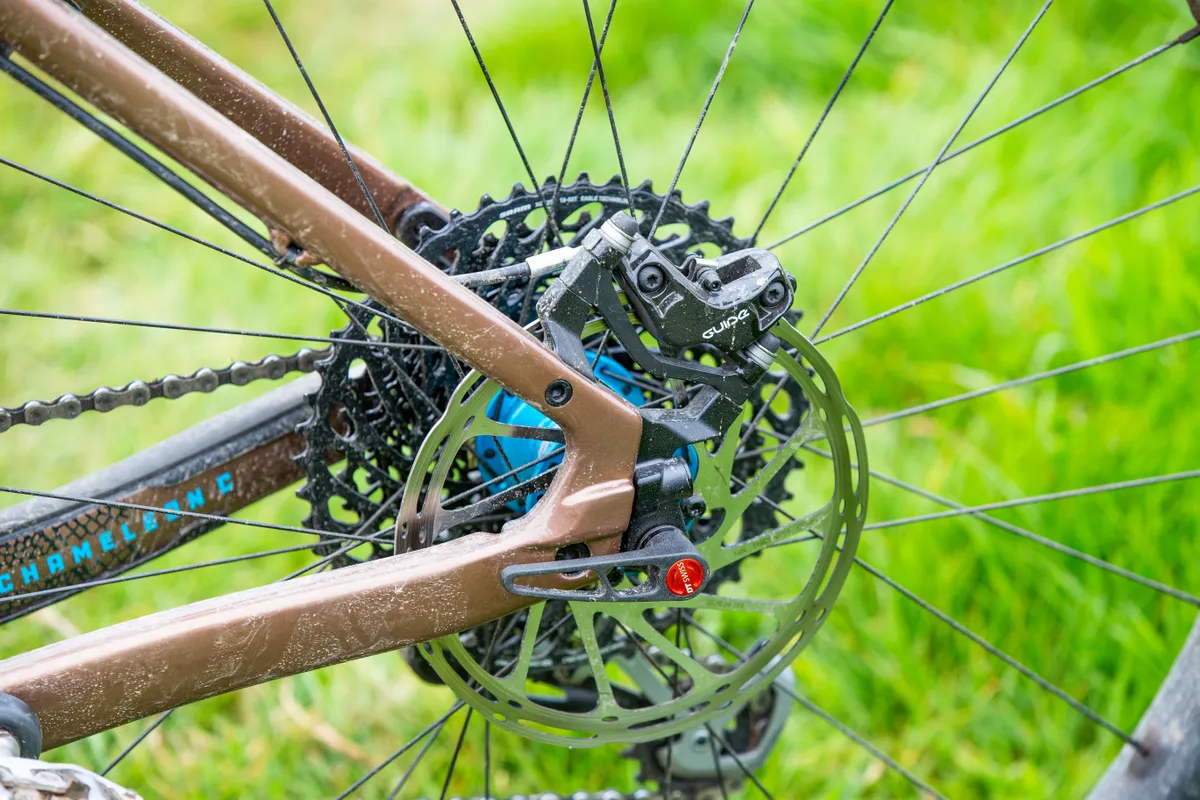
The reach figures and head angle are very middle of the road, but the seat angle is rather slack, even for a hardtail. I’ll be pushing my saddle forwards on the rails to steepen the effective seat angle, I’m sure.
Adjustable chainstays are a nice idea, altering the fore-aft balance, and compensating for different wheel sizes. In all likelihood though, it’ll get set once, and left alone (unless wheels change in diameter).
- Head angle: 67.2 degrees
- Seat angle: 72.7 degrees
- Chainstay: 415–430mm
- Seat tube: 450mm
- Top tube: 646mm
- Head tube: 110mm
- Bottom bracket drop: 47mm
- Wheelbase: 1,168mm
- Stack: 628mm
- Reach: 456mm
Why did I choose this bike?
Like many starting out, I spent my formative mountain bike years on hardtails. Simply put, they were within reach of my meagre secondary school/university budget. I rather enjoyed riding them; I like the connected, direct feel you get through the solid back end and shorter travel up front.
However, in reality, as soon as full suspension bikes became available to me, the harsh back ends got kicked into the long grass, unless I had one on test, of course.
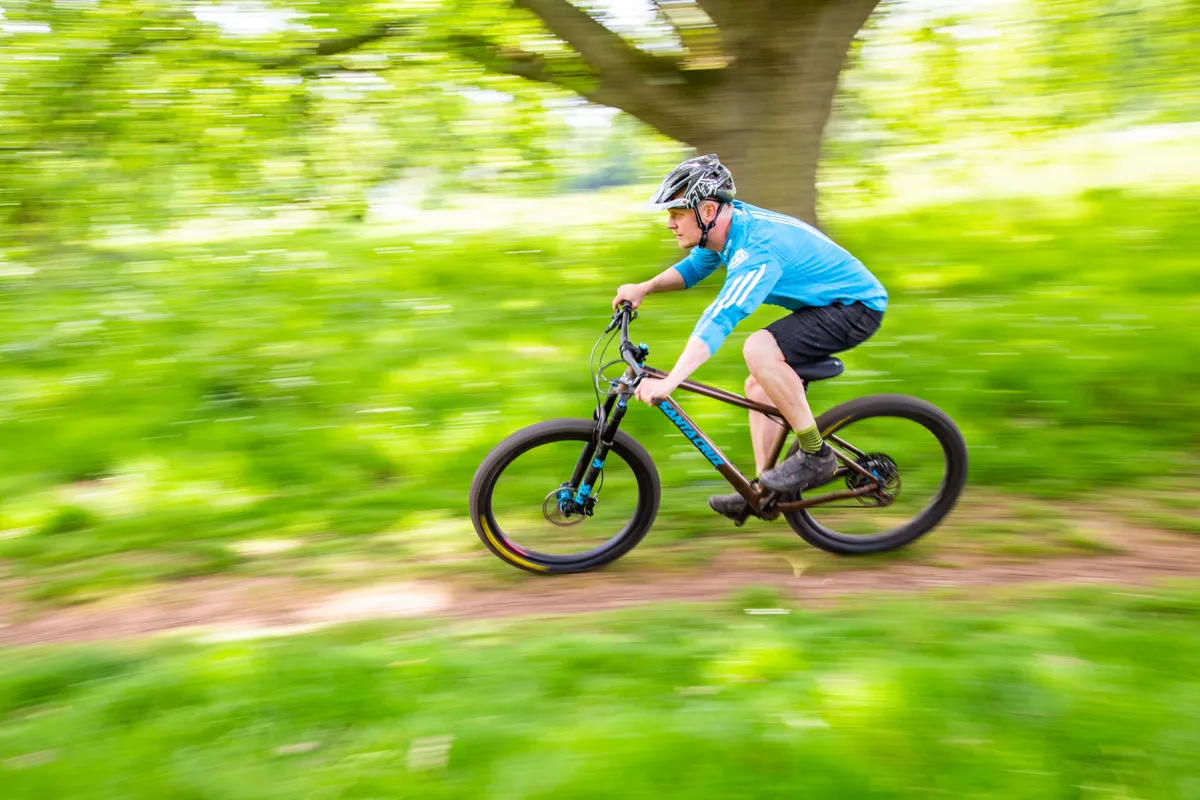
Getting the Chameleon wasn’t planned, as such, but has become a convenient platform for some products I’ll be testing this year. In all honesty, across our titles, we also look for a decent range of bikes for long-term testing, and this year, one of the hardtails has come my way.
I’m not complaining, certainly having ridden the Chameleon a few times now.
I’m not an enduro racer by any stretch and my preference for bikes is for ones that are agile, light, fun and communicative. While I’d probably drop my own money on a full suspension bike to fit this, this Chameleon has all of these facets in abundance.
With a few rides under my belt, I’m certainly getting to grips with where I’ll be taking the Chameleon. My other bike for the year is a Specialized Stumpjumper Evo, and while both are ‘trail’ bikes, they’re very, very different prospects.
Certainly where trails are rough, bouldery and harsh the Spesh will be the bike of choice, but where things are a bit more mellow or even super-steep, the Chameleon will be a regular partner in crime.
Santa Cruz Chameleon C SE+ initial setup
With only the front forks to worry about, getting my suspension set up has been pretty easy — especially because it’s a basic fork. I’ve stuck the recommended pressure (90psi, I’m around 85kg) and five clicks of rebound (one less than recommended to account for a slightly pingier plus tyre — Fox measures from fully closed/slower rebound).
The Rekon+ tyres are lightly treaded, but the ground at the moment is running nice and fast, so I’ve stuck around 16psi in the front and 18 at the back. The bike loves being jumped and slapped around, so having a touch more out back keeps it feeling zippy and gives me a bit more wiggle room when things go awry.
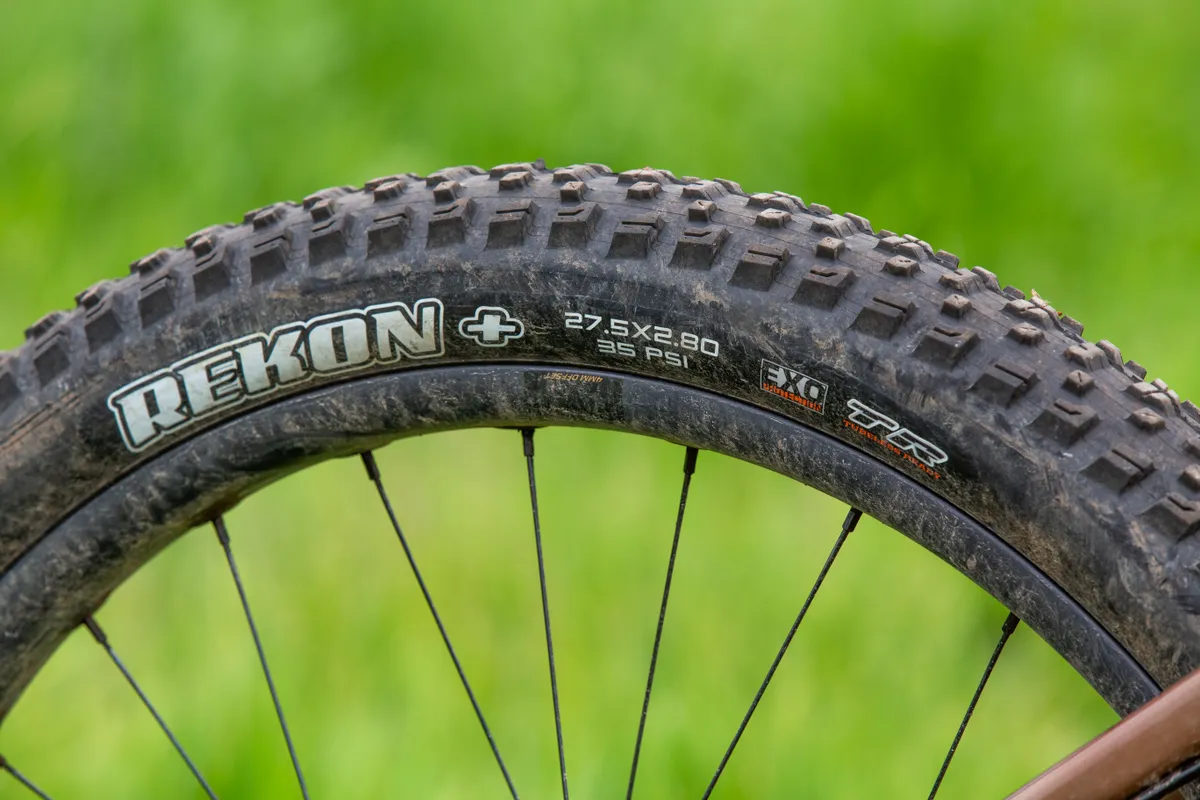
Save for that, I’ve left it all pretty stock.
My seatpost extends a little from the frame, the saddle is currently central in the clamp and the stem has a few spacers underneath. I’ve got the brake levers set up fairly flat, with the levers pulled in mid-way through their adjustment to my preference, and I’ve fitted my favourite pedals — Nukeproof Horizon CS.
In all credit to Santa Cruz, it has been a particularly easy set-up.
Santa Cruz Chameleon C SE+ impressions
I was skeptical when I got the Chameleon as to how much I’d actually like it: maybe I have softened over the years with the plethora of full suspension bikes at my disposal, and the thought of bobbling down a fast, rough track on a hardtail rarely leaves me itching to get out on a ride.
Thank god I bothered though. As I mentioned, my other bike is a Stumpy Evo, and I’ve not wholly fallen in love with it for a lot of the more flowy, mellow riding I do from time to time. It’s a bit of a slugger, and I often felt than I was wasting energy lugging it around. The Chameleon, however, is the perfect counterpoint to that.
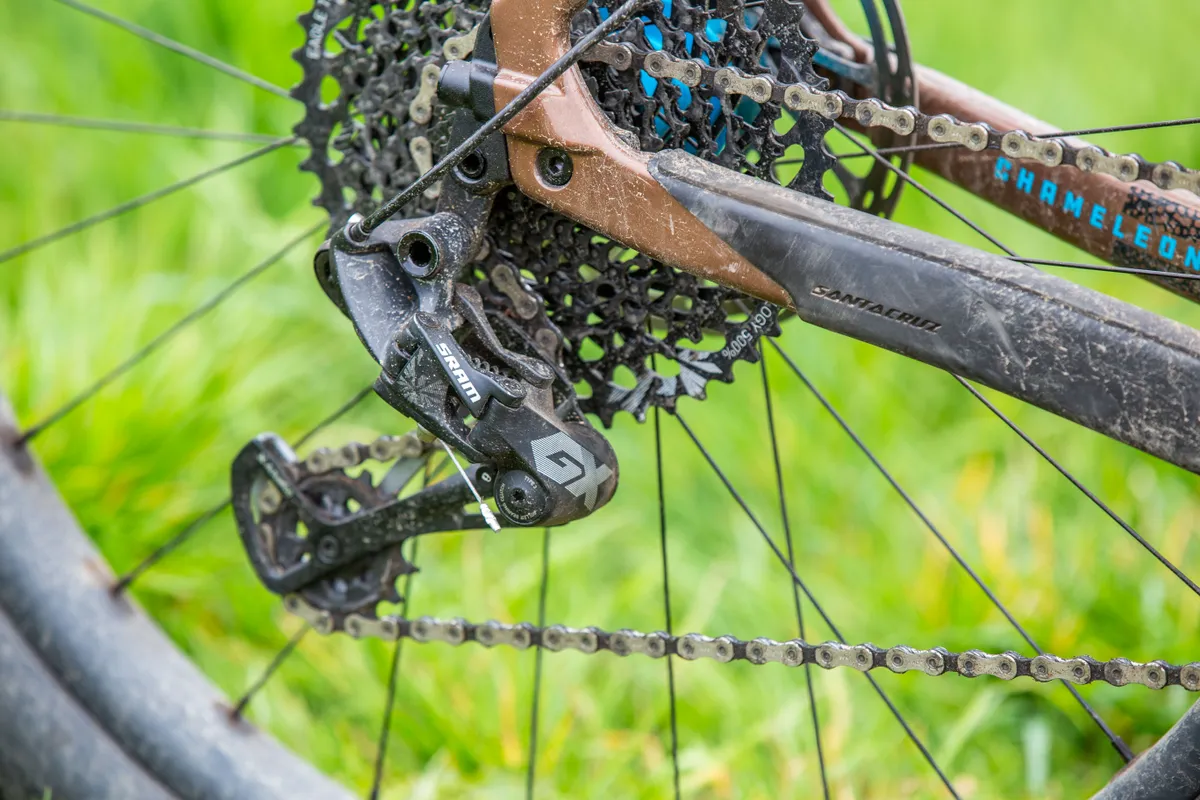
Shy of 12kg it’s fairly light, and despite their width, the low tread and fairly lightweight of the tyres (and not forgetting the carbon rims) means this bike just zips along woodland trails with a heap of character.
The bike’s shape makes it easy to pick up and place where I want it, and it seems super happy being slung through corners and over jumps. I’ve come up short a couple of times, but as yet I’ve never felt that I’m bordering on crashing. Simply put, on the right trail it’s an absolute hoot.
I’ve taken it to Coed Y Brenin in Wales too — a man-made trail center — and rode the MBR trail there. It’s all armoured, with plenty of rock sections, and here the Chameleon wasn’t the dream — maybe I am soft.
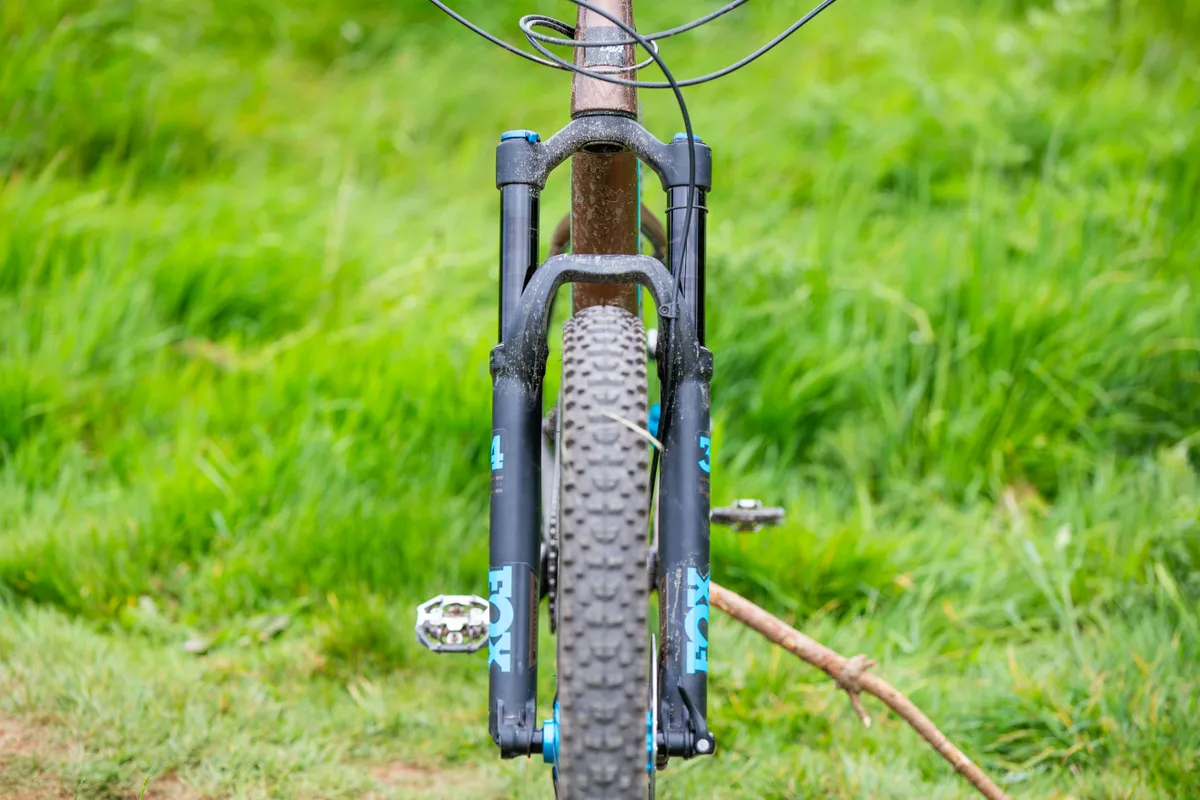
Where it’s hard and lumpy, the rigid back end kicks around, while on climbs keeping a decent pedalling rhythm isn’t quite as easy as on a full suspension bike.
It was entirely possible to pilot it round the trail, not even that slowly either, but I had less fun on that particular trail than I have in the past. Last time was on a Santa Cruz Tallboy, as it happens.
So, with both the Stumpy and Chameleon at my disposal for the year, I’ll be making sure I take the right bike to the right place, to make sure each gets a fair run.
Now, there’s a massive elephant in the room, which simply needs to be addressed. The bike is priced at £5,399.
Yes, you get a carbon frame, and carbon rims. But, you also get a basic fork, basic drivetrain, basic brakes and basic finishing kit.
Slap a different brand name on the down tube and I’d mentally price it at around £2,500. Without checking the price, but knowing its a Santa Cruz, I might have guessed £3,000–£3,500 (especially because the frame is only £1,400). Even with individual components added up at their RRPs, I still struggle to get to that price.
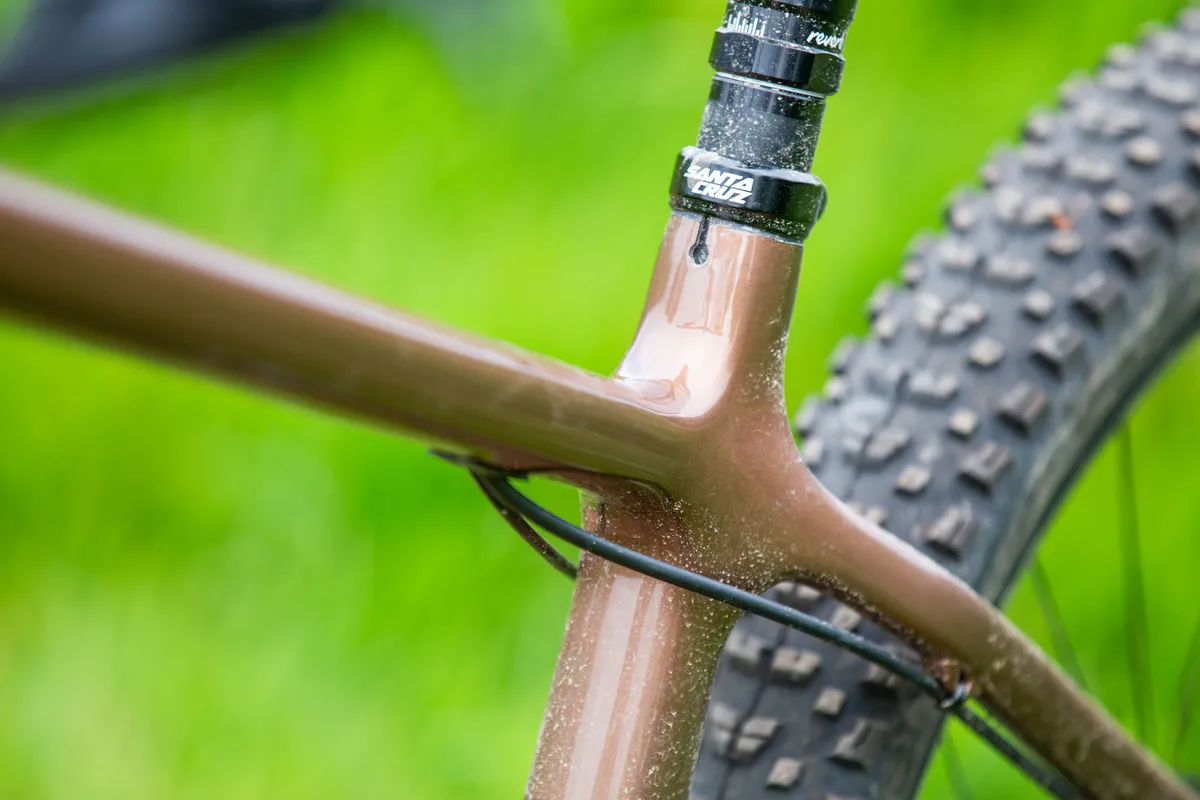
Santa Cruz Chameleon C SE+ upgrades
The main reason that I ended up with a second long-term bike this year is that I needed a bike to stick the Shimano's new XTR groupset on, as well as a couple of shorter travel trail-focussed suspension forks (the Marzocchi Z2 and Ohline RXF34 to name but a couple). The Chameleon fits the bill here rather well, so you’ll be seeing a few choice changes coming along soon.
I’ve played around already with the wheels and temporarily stuck a 29in front wheel in, keeping the plus at the back — I suspect I might keep this on going forwards. I like the accuracy of the bigger wheel with narrower tyre, and the Maxxis Shorty used has more grip than the Rekon+ that was on there. However, I like the added volume out back for comfort. So I suspect that I'll try it with a full niner set up at some point.

